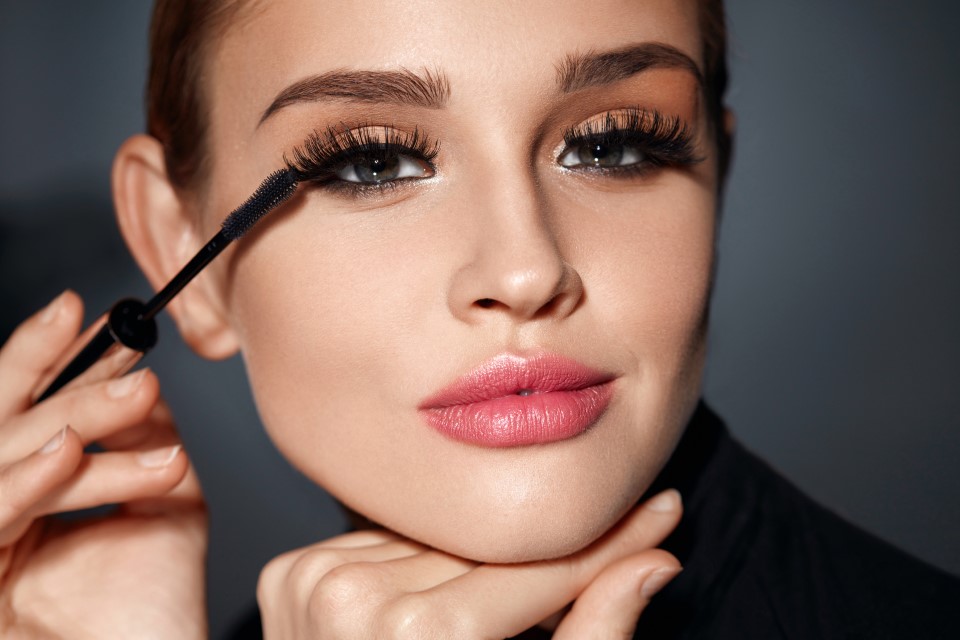
Mascara is one of the most popular and loved make-up cosmetics. It is often the only make-up product used by some women. What was mascara used for in the past and what was it made of? When did it appear on sale? When was the first waterproof formula invented and when the mascara that resembles the contemporary one was launched?
Eyelash make-up is not the discovery of the 21st century or even the 20th century. Eyelashes were painted already in ancient Egypt – and not only by women. Why? It is because eyelash (as well eyelids and eyebrows) painting was not only a beauty procedure, but also served as a protection against the influence of evil spirits, strong sun and dust carried by the wind.
The composition of the ancient mascara was nothing like the recipe of contemporary mascara. The most popular colouring substance was kohl, which was made by mixing coal dust, honey, water and… crocodile dung. Other mascaras contained soot dissolved in oil mixed with white or kohl, composed of, among others, charcoal and malachite. All these receipts originated in ancient Egypt and were used also by other ancient civilizations, namely Greeks and Romans.
In the Middle Ages, mascara lost its popularity and regained it only during the reign of Queen Victoria, in the nineteenth century. At that time women devoted a few hours a day to make-up. Their biggest dream was long, dark eyelashes that began to function as an attribute of female beauty. Although mascara was widely used in Victorian times, it could hardly be bought. Resourceful women knew how to do it on the basis of their original recipes.
The inspiration for the first mascara on the market was… petroleum jelly. It was created in 1852 and, eight years later, a French perfumer Eugene Rimmel created a mascara on its basis which he called ‘Superfin’. Rimmel’s mascara was made from a combination of carbon dust and petroleum jelly, which is why it difficult not to smudge the skin with it. For this reason, Rimmel continued his work on improving his recipe. Finally, near 1917, he created a mascara in the form of a cube with a formula that resembles the one from the contemporary mascaras. A brush was attached to the package, which had to be moistened (preferably by spitting) and applied to eyelashes. Spitting onto the mascara brush became so popular that this cosmetic was called ‘spit black’. This invention has brought Rimmel extreme popularity that until today in some countries the word ‘rimmel’ is a synonym to ‘mascara’.
While Rimmel launched his product on the marker, on the other side of the ocean a chemist from New York T.L. Williams created a cosmetic for his sister Maybel. His mascara was to help her conquer the heart of a man Maybel was in love with. She became an inspiration for Williams to work on a new make-up cosmetic but also to name his company ‘Maybell Laboratories’ and, in time, ‘Maybelline’. His mascara became very popular in the United States as it was also quite affordable. Unfortunately, the main flaw was its reduced durability, which was the reason the mascara was not used on a professional basis, for example in the film industry. The product did not meet the requirements of silent film actresses who needed a reliable mascara. The response was a product called ‘Cosmetic’ made by the Hollywood make-up artist Max Factor. The new product was in the form of a small, hard roller. To apply it to the eyelashes it was necessary to cut a piece of the roller and melt it over the fire. Eyelashes, therefore, were coated in liquid formula, which – when it dried – gave a spectacular, theatrical and long-lasting effect. The cosmetic was perfect for films but not for everyday make-up. Max Factor’s mascara was the first waterproof mascara. Unfortunately, due to the high content of turpentine, it was harmful to the skin and eyes, and the make-up removal was quite an issue. It was not until the late 1950s that a safe, waterproof formula was created.
Another breakthrough in the history of mascara took place in 1958 when Helena Rubinstein launched Mascara-Matic in a metal tube the size of a pen. The package contained also a grooved metal rod that was used to apply the formula to the eyelashes. For the first time in the history of mascara the application became easy and precise. Only two years later Maybelline launched the waterproof Ultra Lash equipped with a nylon wand.
The manufacturers were trying to outdo each other in new formulas of the cosmetic. At the turn of the 20th and 21st century the companies tried to create a recipe for a lengthening and curling formula. To achieve this effect, not only the composition but also the shapes of the brushes and the materials used were changed.
Leave a Reply